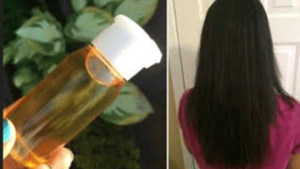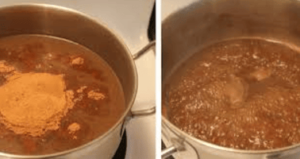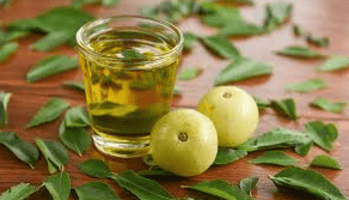Have you been noticing more hair in your shower drain lately? Or perhaps your once-thick ponytail is looking a bit thinner? If you’re searching for a natural solution to hair loss and want to boost hair growth, you’ve likely come across amla—Indian gooseberry—in your research.
Making amla treatments at home for hair growth isn’t just economical; it puts you in control of exactly what goes onto your scalp and hair. What makes amla so special for hair growth is its exceptional vitamin C content—significantly higher than oranges—plus essential fatty acids and antioxidants that nourish hair follicles from the root.
Whether you’re dealing with hair thinning, want to accelerate growth, or simply desire stronger, more lustrous locks, these homemade amla solutions could be the natural answer you’ve been searching for.

Amla Benefits for Hair Growth
Amla, scientifically known as Phyllanthus emblica or Indian gooseberry, is packed with hair-friendly nutrients:
- Rich in vitamin C (20 times more than oranges)
- Contains calcium, phosphorus, iron, and carotene
- High in antioxidants and polyphenols
- Natural source of essential fatty acids
- Contains gallic acid and ellagic acid that strengthen hair follicles
These nutrients work together to stimulate blood circulation to the scalp, strengthen hair roots, prevent premature graying, and create optimal conditions for healthy hair growth. Regular use of amla can address multiple hair concerns simultaneously, making it an all-in-one solution for those seeking longer, stronger hair.
Fresh vs. Dried Amla: Which to Choose for Hair Growth
When making amla at home for hair growth, you’ll need to decide between fresh or dried amla. Both have their advantages:
Fresh Amla
- Maximum nutritional value
- More potent vitamin C content
- Stronger antimicrobial properties
- Seasonal availability (typically autumn through winter)
- Requires immediate processing
Dried Amla
- Available year-round
- Easier to store long-term
- Concentrated nutrients
- Consistent results
- More convenient for some recipes
For the most potent hair growth benefits, fresh amla is ideal when available. However, high-quality dried amla powder or whole dried amla fruits are excellent alternatives that offer similar benefits with added convenience.
Carrier Oils
For your homemade hair oil, you need a carrier oil. The following are a few of the best amla oil carriers:
- Coconut oil: Provides moisture and combats fungal infections;
- Almond oil: Rich in proteins and vitamin E for healthy hair;
- Olive oil: Enhances hair’s luster and smoothness;
- Jojoba oil: Resembling the natural oil of hair
- Argan oil: Packed with fatty acids to heal damaged hair
Your hair type and personal preferences will determine which DIY amla oil ingredients are best for you. To find the ideal combination for soft, healthy, and glossy hair, you can experiment with different carrier oils.
How to Prepare Homemade Amla Oil for Hair Growth
Amla oil is perhaps the most effective and popular way to harness amla’s hair growth properties. Here’s how to make it at home in detail:
 Ingredients
Ingredients
- 2 cups of coconut oil or sesame oil (base oil)
- 1 cup fresh amla (chopped) or 1/2 cup amla powder
- Optional: 1 tablespoon fenugreek seeds for added benefits
Method
- Wash fresh amla thoroughly and remove seeds
- Use premade amla powder or chop the amla into tiny bits.
- Dry the fresh amla pieces completely to remove moisture
- Heat the base oil in a pan on low flame
- Add the amla pieces or powder to the warm oil
- Let it simmer on low heat for 20-30 minutes until the amla turns brown
- For a stronger infusion, allow the mixture to cool and then reheat again 2-3 times
- After the final heating cycle, let it cool overnight
- Let it strain through fine mesh or cheesecloth.
- Store the oil in a dry, clean glass bottle
Application for Hair Growth
- Warm the oil slightly before use
- Massage into scalp using fingertips for 10-15 minutes
- Cover your hair with a warm towel for deeper penetration
- To get the most benefits, stay for at least an hour or overnight.
- Wash with a mild shampoo
Use this homemade amla oil two to three times a week for the best benefits in hair growth. You’ll likely notice reduced hair fall within 4-6 weeks and improved growth in 2-3 months with consistent use.
Amla Hair Mask Recipes for Accelerated Growth
Amla hair masks provide intensive treatment that can dramatically boost hair growth. Here are three powerful homemade amla mask recipes:
Amla-Yogurt Growth Mask
Ingredients
- 3 tablespoons amla powder
- 1/2 cup plain yogurt
- 1 tablespoon honey
Method
- Combine all the ingredients to create a paste that is smooth.
- Apply to scalp and hair length
- Cover with a shower cap
- Leave for 45-60 minutes
- Rinse thoroughly with lukewarm water
Amla-Egg Protein Mask
Ingredients
- 2 tablespoons amla powder
- 1 egg (white only for oily hair, whole egg for normal/dry hair)
- 1 tablespoon olive oil
Method
- Whisk egg well
- Mix in amla powder and olive oil
- Apply to scalp and hair
- Leave for 30 minutes
- Rinse with cold water because hot water can cause the egg to cook.
Amla-Fenugreek Growth Booster
Ingredients
- 3 tablespoons amla powder
- 2 tablespoons soaked fenugreek seed paste
- 1 tablespoon aloe vera gel
Method
- Make a paste by soaking fenugreek seeds overnight.
- Mix with amla powder and aloe vera gel
- Apply to scalp and hair roots
- Leave for 1 hour
- Rinse thoroughly
Apply these masks once weekly alongside your amla oil treatments for comprehensive hair growth support.
How to Make Amla Juice for Internal Hair Growth Benefits
While external applications are effective, consuming amla internally can enhance hair growth from within. Here’s how to make amla juice at home:
Fresh Amla Juice
Ingredients
- 5-6 fresh amla fruits
- 1 cup water
- Honey to taste (optional)
- Pinch of black salt (optional)
Method
- Remove seeds and chop fresh amla
- Blend with water to make a smooth puree
- Strain through a fine mesh
- Add honey and black salt if desired
- Consume immediately for maximum benefits
Dried Amla Juice
Ingredients
- 2 tablespoons dried amla powder
- 1 cup warm water
- Honey to taste (optional)
- Lemon juice (optional)
Method
- Mix amla powder with warm water
- Soak it for one to two hours or overnight.
- Strain the mixture
- If preferred, add lemon juice and honey.
- Drink on an empty stomach
Consuming 1/4 cup of amla juice daily can significantly boost your hair growth by providing essential nutrients from within. The high vitamin C content helps your body produce collagen, which strengthens hair shafts and encourages growth.

Amla Hair Rinse for Growth and Shine
An amla hair rinse can help balance scalp pH, remove product buildup, and create an optimal environment for hair growth. To make it at home, follow these steps:
Ingredients
- 1/4 cup amla powder
- 4 cups water
- 1 tablespoon apple cider vinegar (optional)
Method
- Boil water and add amla powder
- Simmer for 15-20 minutes
- Let it cool and strain
- Add apple cider vinegar if desired
- Transfer to a spray bottle or container
Application
- After shampooing, pour the rinse over your scalp and hair
- After a gentle massage, leave it in for 5 minutes.
- Use cool water to rinse or leave in
- Use weekly for best results
This amla rinse helps seal hair cuticles, adds shine, and creates a healthy scalp environment that promotes faster hair growth.
How to Make Amla Hair Gel for Daily Growth Support
For daily hair growth support, you can make an amla hair gel that nourishes without weighing hair down:
Ingredients
- 2 tablespoons amla powder
- 1 tablespoon flaxseeds
- 1 cup water
- 5 drops rosemary essential oil (optional)
Method
- Boil flaxseeds in water until it becomes slightly gelatinous
- Add amla powder and simmer for another 5 minutes
- Let it cool completely
- Strain the mixture with a fine mesh or cheesecloth
- Add rosemary essential oil and mix well
- Store in a clean container in the refrigerator
Application
- Apply a little to wet hair.
- Focus on roots and hair length
- Style as usual
- Use daily for consistent growth support
This natural gel provides daily nourishment to hair follicles while also offering light styling hold. The cooling effect also helps reduce scalp inflammation that can inhibit growth.
Amla and Herb Combinations for Enhanced Growth
You can enhance amla’s hair growth properties by combining it with other beneficial herbs:
Amla-Bhringraj Powerhouse
- Equal parts amla and bhringraj powder
- Add water to form a paste
- Apply to scalp and leave for 30-45 minutes
- Rinse thoroughly
- Use weekly for accelerated growth
Amla-Hibiscus Stimulator
- 3 tablespoons amla powder
- 2 tablespoons dried hibiscus powder
- Water or yogurt to form paste
- Apply to scalp and hair
- Leave for 45 minutes
- Rinse thoroughly
Amla-Shikakai-Reetha Triple Action
- Equal parts amla, shikakai, and reetha powder
- Mix with water
- Apply to scalp and hair
- Leave for 30 minutes
- Rinse thoroughly
These herbal combinations work synergistically to provide comprehensive hair growth benefits that address multiple concerns simultaneously.
Common Mistakes to Avoid When Making Amla for Hair Growth
When making amla at home for hair growth, avoid these common pitfalls:
- Using chlorinated water directly on amla powder (use filtered water)
- Overheating amla during preparation (destroys vitamin C)
- Using metal containers for storage (can react with amla)
- Adding excessive essential oils to preparations
- Using expired or poor-quality amla powder
- Inconsistent application (results require regularity)
- Not adjusting pH of preparations (amla is acidic)
Integrating Amla Treatments Into Your Hair Growth Routine
For optimal results when using homemade amla for hair growth, follow this suggested schedule:
- Twice weekly: Amla oil massage
- Once weekly: Intensive amla hair mask
- Daily: Consume amla juice or supplement
- After every wash: Amla hair rinse
- Daily: Amla gel for styling and nourishment
Results start to show after 2-3 months of regular use.
FAQs
Can I make amla treatments at home if I have colored hair?
Yes, you can use homemade amla treatments with colored hair, but be aware that amla may slightly darken light-colored or highlighted hair due to its natural dyeing properties.
For blonde or light-colored hair, consider reducing the treatment time or using amla oil rather than direct amla paste applications. Always perform a strand test first to check for any color changes.
How long does homemade amla oil last before it expires?
Properly prepared homemade amla oil typically lasts 6-12 months when stored in a cool, dark place in an airtight glass container. Signs that your amla oil has expired include rancid smell, change in color, or unusual texture.
Adding a few drops of vitamin E oil as a natural preservative can extend shelf life. Refrigeration can further extend longevity but may cause the oil to solidify (simply warm before use).
Can making amla treatments at home help with premature graying?
Yes, homemade amla treatments can help address premature graying when used consistently. Amla is rich in antioxidants and vitamin C that help preserve natural hair color by protecting melanocytes (pigment-producing cells) from oxidative damage.
For best results with graying hair, combine amla with other herbs like bhringraj, black tea, or curry leaves in your homemade preparations. Regular internal consumption of amla juice can also support this effect.
How often should I apply homemade amla treatments for visible hair growth results?
For noticeable hair growth results, apply homemade amla oil treatments 2-3 times per week and use an amla hair mask once weekly. Consistency is more important than frequency—regular application over 3-6 months yields better results than intensive but inconsistent use.
Those with oily scalps should focus on roots only and may reduce oil treatment frequency to once weekly, while dry hair types can benefit from more frequent applications.
Is it better to make amla treatments at home or buy commercial products for hair growth?
Making amla treatments at home for hair growth generally provides superior benefits compared to commercial products because homemade preparations contain no preservatives, artificial fragrances, or fillers that may diminish efficacy. Home preparations allow you to customize formulations based on your specific hair needs and ensure maximum freshness and potency of ingredients.
However, quality commercial products may offer convenience and standardized formulations. The best approach often combines homemade treatments for intensive care with trusted commercial products for daily maintenance.
Conclusion…
Learning how to make amla at home for hair growth puts you in control of your hair health journey.. The versatility of amla—whether used as an oil, mask, rinse, or consumed internally—makes it accessible for all hair types and concerns.
What makes homemade amla treatments particularly effective for hair growth is the freshness and purity of the preparations. Without preservatives or diluting agents, you’re applying the full spectrum of amla’s beneficial compounds directly to your scalp and hair follicles. This holistic approach addresses hair growth from multiple angles: strengthening existing strands, nourishing follicles, balancing scalp health, and providing internal nutritional support.
By incorporating these amla preparations into your regular hair care routine, you’re not just addressing current concerns but also investing in long-term hair health. The journey to make amla at home for hair growth may require some initial effort, but the sustainable results—naturally beautiful hair that grows with strength and vitality—make it thoroughly worthwhile.



